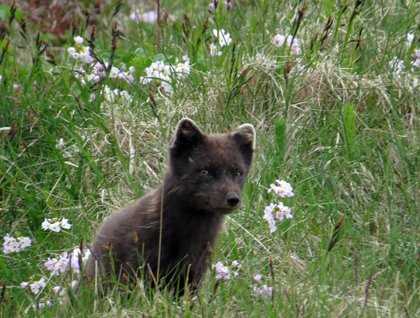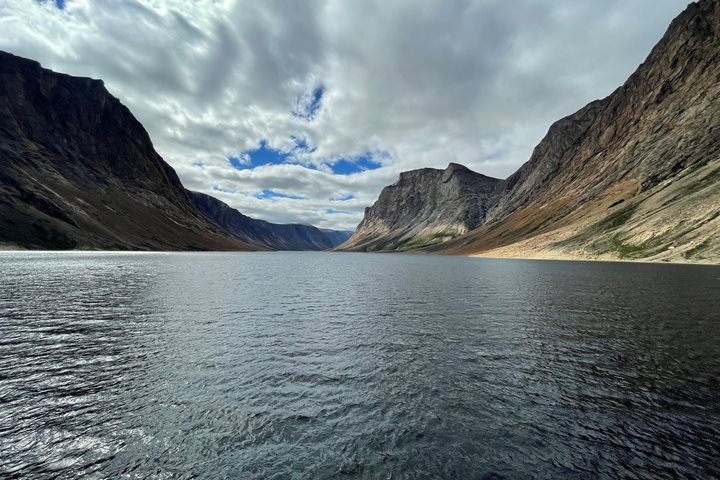Today was the third full day of our circumnavigation of Iceland, and our morning started in true expedition style. We zipped away in the Zodiacs to beautiful Hornstrandir Peninsula the northernmost part of the West Fjords. We definitely felt the change in location as the wind created waves that splashed our Zodiacs as we disembarked. The exercise hike was a great opportunity to stretch our legs. Participants quickly renamed it the adventure hike because this remote section of Iceland offered a variety of terrain. The “spongy” vegetation kept us high-stepping over beautiful streams and through a variety of flora. We saw mountain avens (the national flower of Iceland), thrift, alpine bartsia, wild thyme, wooly willow, common cottongrass, bog bilberry, and a variety of orchids. One of the plants we saw was butterwort, which traps insects in it sticky leaves and absorbs their nutrients. Also on our hike we stopped to watch a family of whooper swans, two parents and three cygnets. Many people pointed out the resemblance of the Garden Angelica to rhubarb because of its stalk. On many of the more tranquil streams we saw an iridescent sheen on the water, which is due to botanical oils and decaying organics on the shore. On our return to “Bridget”, our dry-lander, we spied a young Arctic fox bounding down the slope to the beach area. The fox was of the blue morph, which is most common in Iceland (approximately 80%), but rare in the overall Arctic fox population.
In the afternoon, our Global Perspectives Guest Speaker Tim Severin described his experience of recreating the Brenden Voyage. This expedition was an attempt to prove that the long-contested voyage of Saint Brenden was possible. For the construction of the boat, Severin and his team referenced manuscripts, images, and descendant boats. In order to figure out sewing, the team referenced Bible satchels carried by monks of the time. Fun Fact: They used 23 miles of hand rolled flax thread to create the Brenden. Without leaving our seats, we were transported from Ireland to Iceland in the first part of his historic voyage.
We finished the day with National Geographic photographer Michael Melford, who shared his experiences on assignment for National Geographic and National Geographic Traveler Magazine. It was inspiring to hear about all the photographs he attempted in order to create cover worthy images. For each photo he has published, he has taken an average of 1,331 photos. In his experience, photography is about taking the opportunity. According to Michael, “Never walk past a photograph.”






